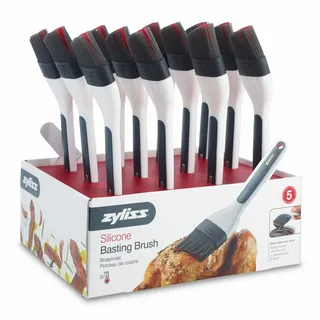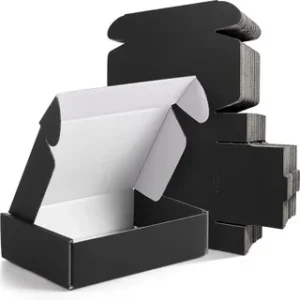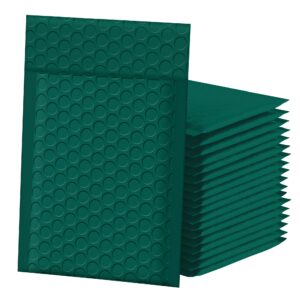How to Sanitize a Basting Brush for Safe Cooking
When it comes to safe cooking, keeping tools clean is essential. One tool that often gets overlooked is the basting brush. Frequently used in both grilling and baking, a basting brush comes into contact with various ingredients. Due to its regular exposure to oils, sauces, and marinades, this tool can become a breeding ground for bacteria if not cleaned and sanitized properly. This article will provide a step-by-step guide on how to clean and sanitize your basting brush to keep your cooking safe and hygienic.
Why Sanitizing a Basting Brush Matters
Basting brushes come in contact with raw meats, marinades, and oils. Without proper sanitization, these brushes can carry foodborne bacteria, which can then transfer to your food. Even when cleaning with hot water and soap, some bacteria may linger in the bristles or silicone strands. Proper sanitization kills these harmful microorganisms and ensures your brush remains safe to use.
Types of Basting Brushes and Their Cleaning Needs
Before diving into sanitization steps, it’s helpful to understand that there are two main types of basting brushes: silicone and bristle brushes.
- Silicone Basting Brush: Made of flexible, heat-resistant silicone, these brushes are durable and easy to clean. They don’t retain oils or sauces as much as traditional bristle brushes, making them a popular choice.
- Bristle Basting Brush: Often made with natural or synthetic bristles, these brushes can be more challenging to clean. They may trap more food particles and oils, requiring extra attention during the cleaning process.
Step-by-Step Guide to Clean and Sanitize Your Basting Brush
Step 1: Initial Rinse
Begin by rinsing your basting brush under warm, running water. This step removes surface oils and loose food particles. Point the brush downwards to prevent water from seeping into the handle, especially for wooden-handled brushes.
Step 2: Use Dish Soap
Apply a few drops of mild dish soap to the brush, focusing on the bristles or silicone strands. Gently work the soap through the brush using your fingers. For a bristle brush, you might need to separate the bristles to ensure each part gets thoroughly cleaned. Silicone brushes are generally easier to clean, as the silicone doesn’t absorb oils like natural bristles do.
Step 3: Deep Cleaning for Basting Brush
To thoroughly clean your basting brush, you’ll need a small bowl filled with warm water and a teaspoon of baking soda. Baking soda acts as a natural abrasive and disinfectant. Submerge the brush head in the solution and swish it around for a few minutes. For a bristle brush, this step helps break down any stubborn oils trapped in the bristles.
Step 4: Disinfect Using White Vinegar or Hydrogen Peroxide
Vinegar and hydrogen peroxide are both effective at killing bacteria on cooking tools. Here’s how to use each:
- Using Vinegar: Fill a bowl with equal parts white vinegar and water. Submerge the basting brush for about 10-15 minutes. The acidity in vinegar kills bacteria and breaks down any remaining grease.
- Using Hydrogen Peroxide: Fill a bowl with hydrogen peroxide and let the brush sit for 5-10 minutes. Hydrogen peroxide is a powerful disinfectant that can eliminate a wide range of bacteria.
After using either vinegar or hydrogen peroxide, rinse the brush under warm water. Make sure all traces of the disinfectant are removed to avoid any lingering smell or taste on the brush.
Step 5: Use Boiling Water (For Silicone Brushes Only)
For those using a silicone basting brush, boiling water can provide additional sanitization. Bring a pot of water to a boil and dip the silicone brush into the water for about 30 seconds. This step helps kill any remaining bacteria or germs. Avoid this step for bristle brushes, as boiling water can damage natural or synthetic bristles.
Step 6: Air Dry Properly
After sanitizing, it’s crucial to let your basting brush dry completely. Place it on a clean towel or hang it up with the bristles facing down. This positioning ensures that water doesn’t pool in the handle, which can cause mold growth over time.
Additional Tips for Keeping Your Basting Brush Clean
- Clean After Every Use: Rinse and wash your basting brush immediately after use, even if you plan to sanitize it later. This simple step keeps food particles and oils from hardening on the brush.
- Replace Worn Brushes: Over time, bristles can fray, and silicone can crack. When your basting brush starts showing wear, it’s best to replace it. Damaged brushes can harbor more bacteria and become harder to clean.
- Store Correctly: After drying, store the basting brush in a clean, dry place. Avoid keeping it in a damp area, as moisture encourages bacterial growth.
- Use Separate Brushes for Raw and Cooked Foods: If you frequently cook meats, consider using one basting brush for raw meats and another for applying marinades to cooked foods. This practice minimizes the risk of cross-contamination.
Common Questions About Sanitizing a Basting Brush
Can I Clean a Basting Brush in the Dishwasher?
Yes, many silicone brushes are dishwasher-safe, but always check the manufacturer’s instructions. Place it on the top rack of the dishwasher for a thorough clean. Avoid placing wooden-handled brushes in the dishwasher, as the heat and water can damage the wood and cause cracking.
Is Bleach Safe to Use on a Basting Brush?
Although bleach is a powerful disinfectant, it’s generally not recommended for sanitizing cooking tools. Bleach can be too harsh on bristles and may leave a residue. If you’re considering bleach, make sure to dilute it properly, and rinse the brush thoroughly to remove all traces of bleach.
How Often Should I Replace My Basting Brush?
The lifespan of a basting brush depends on its material and usage. Silicone brushes last longer and can withstand frequent cleaning, while bristle brushes may need replacing every few months, especially with heavy use. If you notice wear, discoloration, or a persistent smell, it’s time to get a new brush.
Final Thoughts
Sanitizing your basting brush is essential to safe and healthy cooking. By following these steps regularly, you can ensure that your brush remains free of harmful bacteria and safe to use. A well-maintained basting brush not only enhances flavors in your dishes but also contributes to your kitchen’s hygiene.













Post Comment